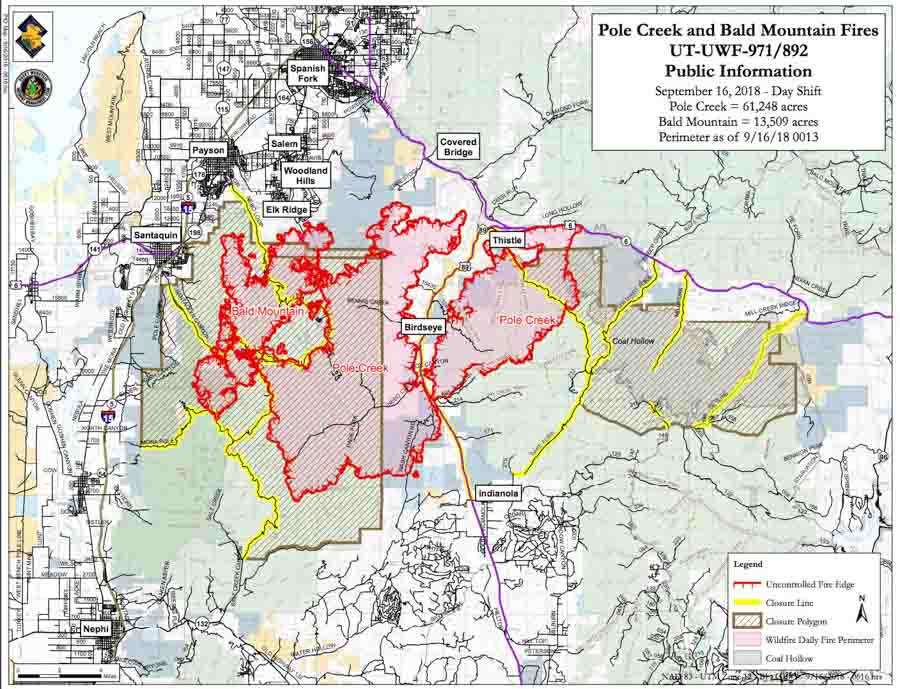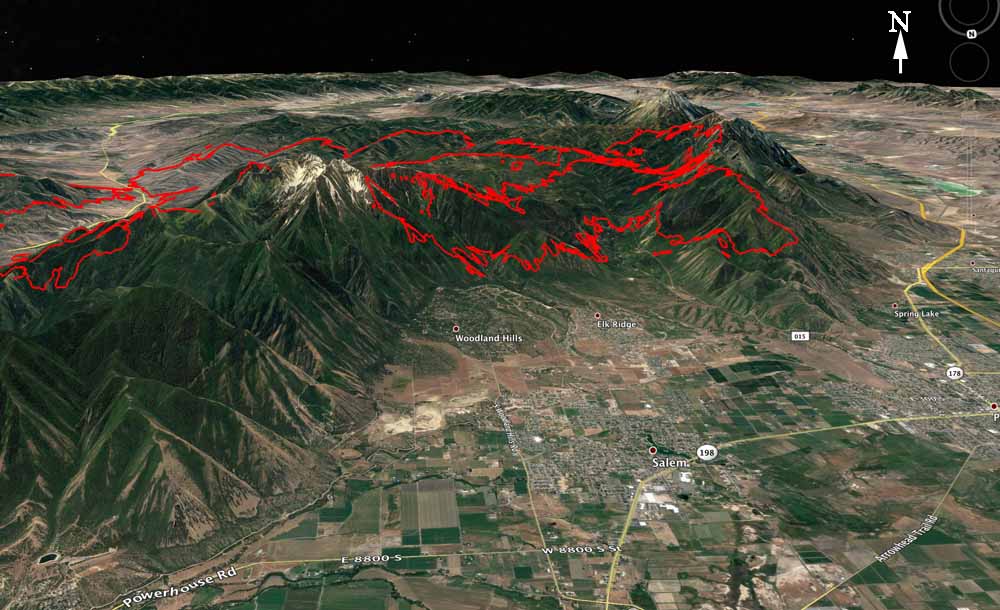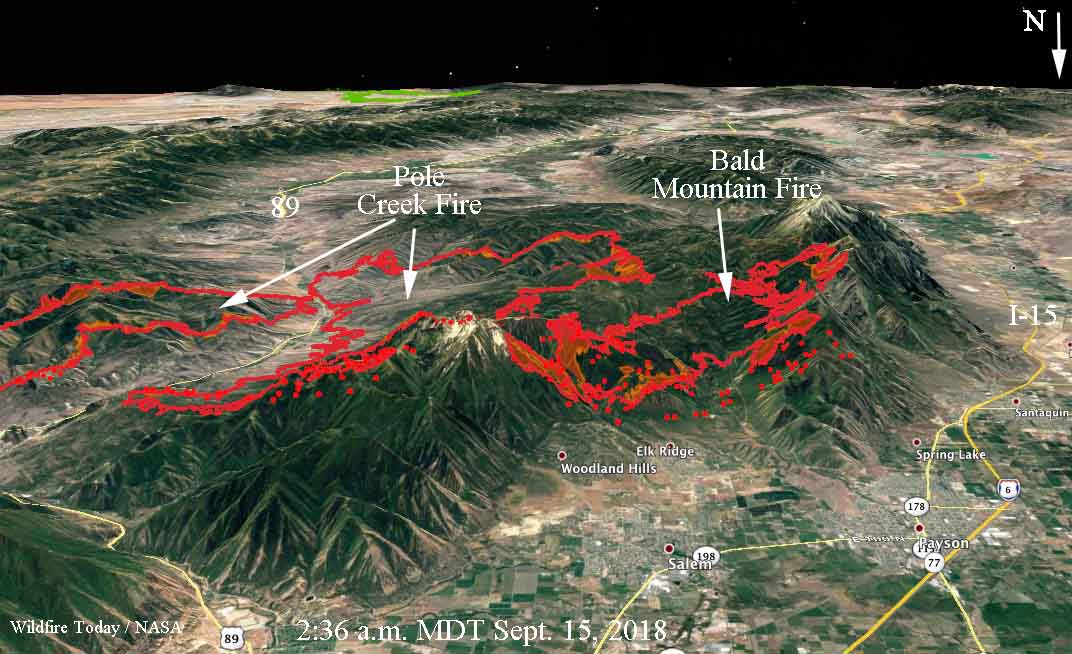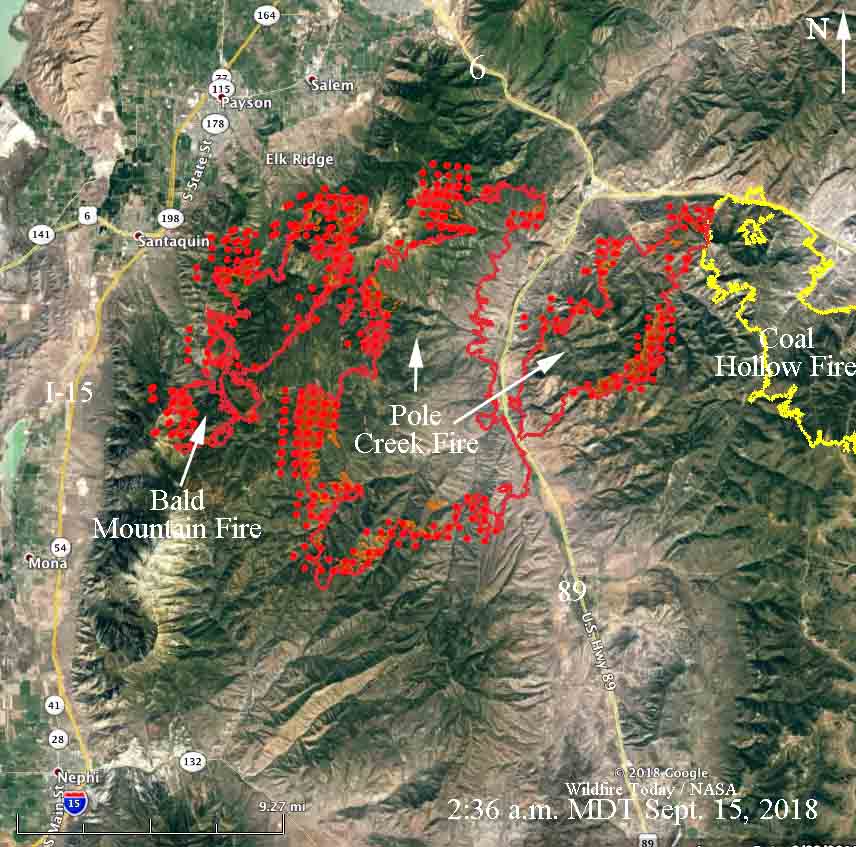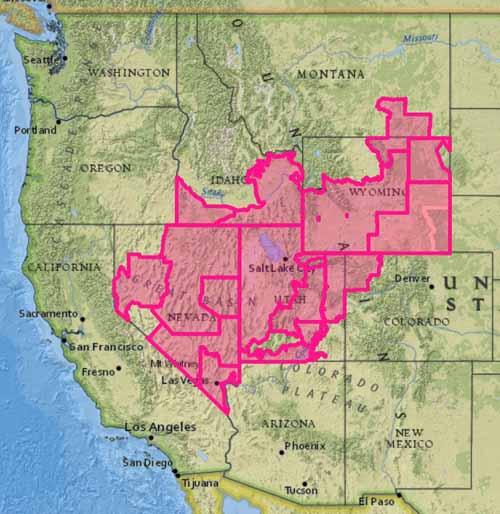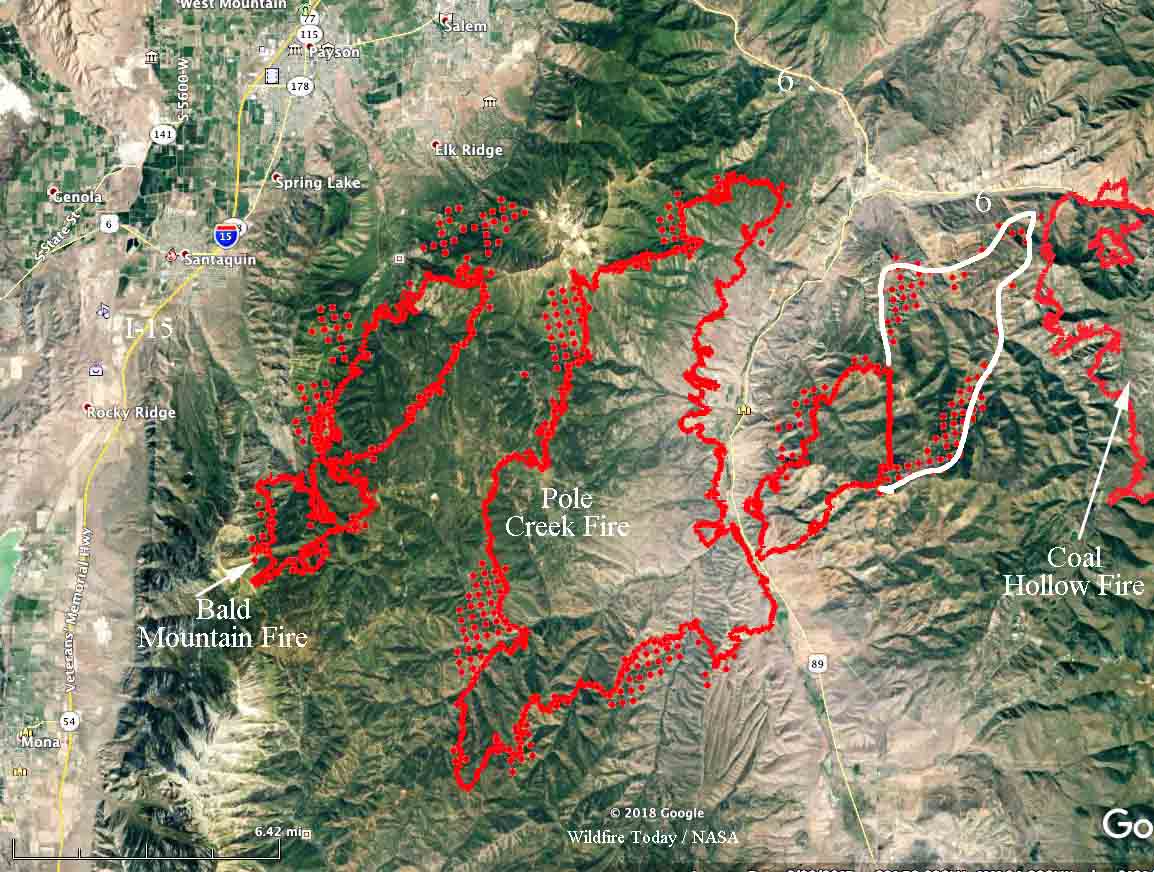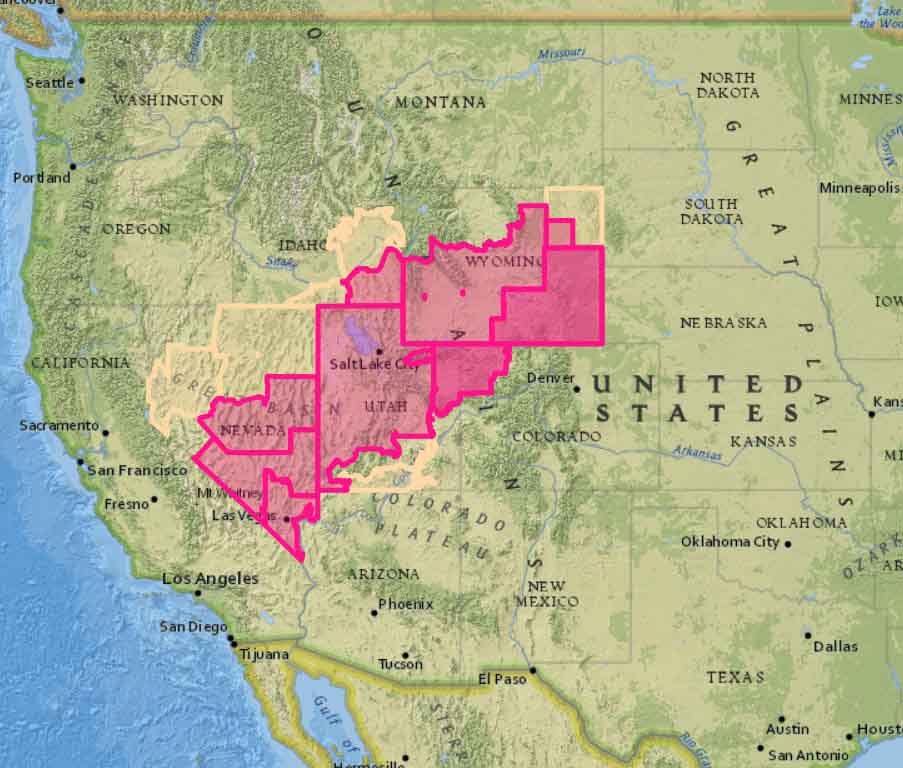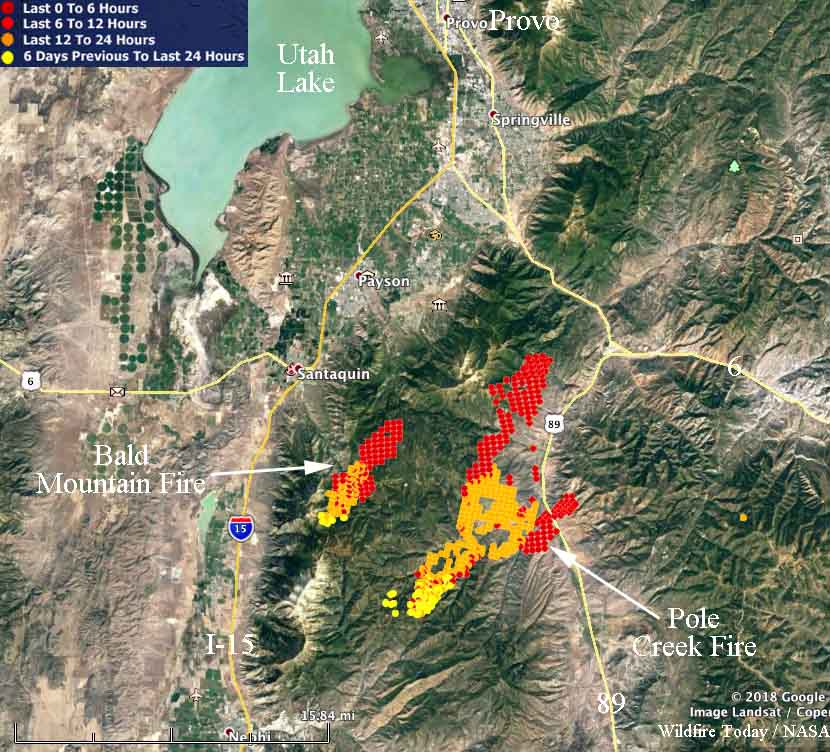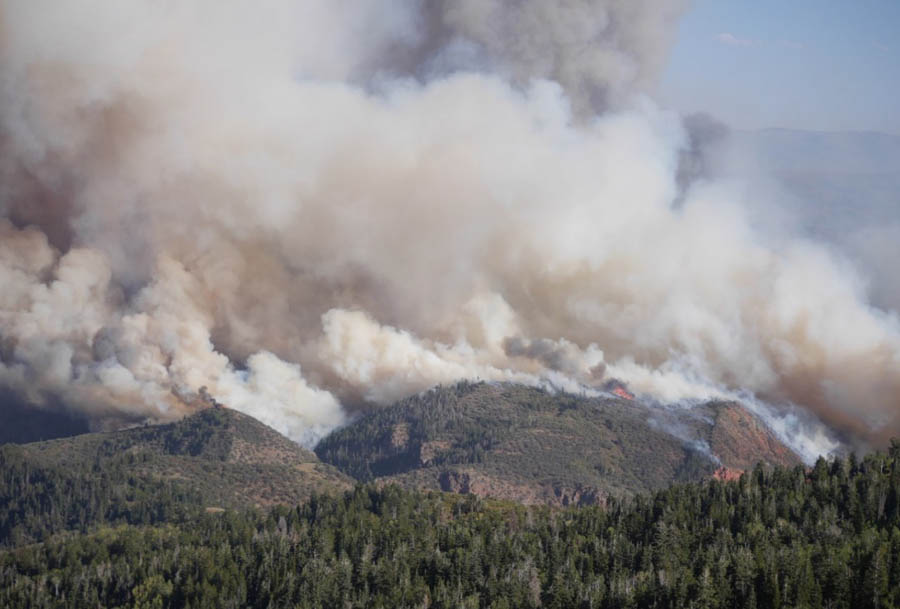
The Bald Mountain and Pole Creek Fires started last year on August 24 and September 6 respectively about 15 miles south of Provo, Utah in the Uinta-Wasatch-Cache National Forest. Both fires were initially managed in a less than full suppression mode — allowed to spread within lines drawn on a map. Rainfall amounts ranging from 1.3″ to 2.3″ on August 25 put a damper on the fire activity, but within days the Energy Release Component had returned to the 90+ percentile range. Meanwhile the area had been classified as in Severe Drought by the Drought Monitor.
The weather changed on September 10, bringing strong winds and a series of Red Flag Warnings causing the two fires to burn together. The final size was 120,851 acres.
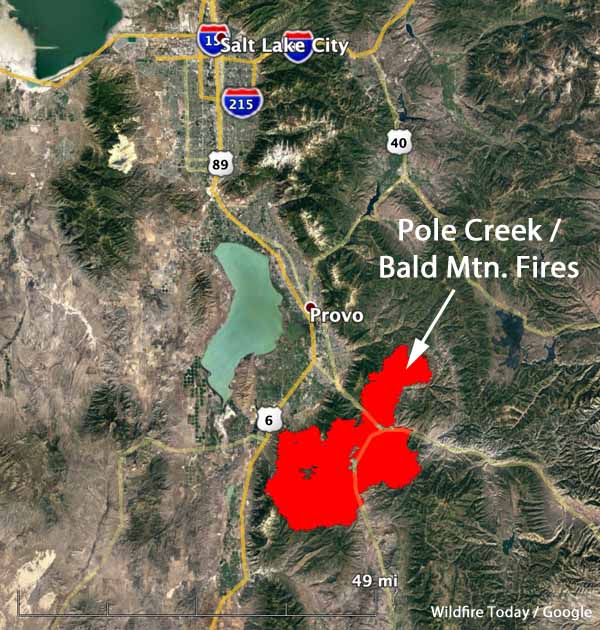
The Bald Mountain Fire caused mandatory evacuation of two cities: Elk Ridge and Woodland Hills. The Pole Creek Fire triggered mandatory evacuations for the Covered Bridge Community of the Spanish Fork Canyon along with the Diamond Fork Canyon and the Right Fork Hobble Creek Canyon areas.
Below are excerpts from a Facilitated Learning Analysis recently released:
First WFDSS Decision
Late afternoon on August 24, the District Ranger wrote a Wildland Fire Decision Support System (WFDSS) decision for the Bald Mountain Fire, which was then at 0.1 acre in size. This decision was published on August 27 at 1018 hours. Based on map estimates, the planning area boundary was 3,280 acres.
The relative risk was determined to be low, as were the probability of a significant event or extreme fire conditions. A Type 4 organization was determined as appropriate for staffing. The course of action recorded in WFDSS was to: “Allow fire to burn to north, northeast and east. However, consider and allow suppression actions on the southwest and southern boundaries to prevent fire from reaching private lands and minimizing the need to close the Mona Pole Road. Fire behavior may dictate a different outcome, but where management of the fire through suppression or other tactics allow for steering the fire in the right direction, implement those.”
[…]
Fire managers assessed the opportunity to take advantage of this fire to meet restoration objectives by taking into account such factors as: a lack of values at risk (campgrounds, private inholdings, power lines, etc.), the composition of the surrounding vegetation, time of year, remote location, recent precipitation, and potential hazards (standing dead trees, steep terrain, and loose rocks). They expected the fire to go out by itself like other recent fires on the Forest.
“We put the Bald Mountain Fire into monitor status due to issues with snags and associated safety concerns, but also because it was Wilderness where fire is OK as a natural process,” said the Zone Assistant Fire Management Officer/Duty Officer (ZAFMO/DO). “But firefighter safety was the primary driver for our decision.”
[…]
September 10
Shortly after 1400 hours, ICT4 called Dispatch, informing them that the winds had increased and the fire had aligned with the south fork of the drainage and was making a run. He requested that they order a Type 2 Incident Management Team (IMT) and multiple aviation resources. ICT4 was new to the Region but came from a high complexity forest with a heavy fire load. Where he was from, an order for a Type 2 Team and significant aviation resources would have been automatic.
Meanwhile, ZFMO had just left the fire an hour before, when it was still 25 acres. “When I hit the bottom of Nebo Loop [Road] I could hear clearly a Type 2 Team being ordered from the fire,” said ZFMO/DO, a long-time UWF employee who had also been a hotshot superintendent on a northern Utah crew. He thought, “We need to ‘pump the brakes’ on the team order.” He told ICT4, (also a qualified ICT3) to hold on until he could get a look at the fire.
At the time ICT4 was calling for a Type 2 Team, the Forest DO and Forest FMO were briefing the Forest Supervisor. Not knowing the details of the rapidly evolving situation and thinking the fire was approximately 75 acres, the Forest Supervisor asked the Forest DO to put a hold on the aircraft and Type 2 IMT. After the Forest Supervisor’s review of WFDSS, it didn’t make sense to take such aggressive suppression action. The fire was well within the planning area, meeting objectives, and not close to threatening values at risk (see Figure 13). Parts of the order for aircraft went through, however, and shortly thereafter a Type 1 Helicopter and some “Fire Bosses” (water-scooping single-engine air tankers) were on scene.
[…]
September 13
[…] At 0836, the Forest Supervisor canceled the Type 2 IMT and ordered a Type 1 IMT to assume command for both the Pole Creek and the Bald Mountain Fires. At 1030, ZFMO flew the fires with ICT3 and ICT3t. The flight was rough due to unstable air and high winds. Both fires were actively burning and had already formed columns. They witnessed extreme fire behavior along the Highway 89 corridor with ongoing firefighting efforts. ICT3 noted that the Pole Creek Fire would likely impact Highway 6. ZFMO contacted Forest DO and recommended that the Forest Supervisor order a second Type 1 Team for just the Bald Mountain Fire due to fire behavior, values at risk, and the complexities of both fires.
September 13: Bald Mountain IC Transitions
At approximately 0500, a local Fire Chief arrived on scene and tied-in with Bald Mountain IC. The Chief ordered three engines from his department. All resources on the Bald Mountain Fire were now engaged in evacuations.
[…]
The WFDSS for Pole Creek published on September 13 included these courses of action:
- Only commit firefighters under conditions where firefighters can actually succeed in protecting identified values at risk.
- Utilize direct and indirect tactics to fully suppress the fire. This action will take into account: first, risk and exposure to firefighters and the public; and second, the protection of identified values such as utility corridors and infrastructure, private structures, the railroad corridor, and the Highway 6 corridor.
The WFDSS for Bald Mountain published on September 13 included the previous courses of action for Pole Creek and added:
- Assign a Public Information Officer in order to disseminate timely information to the public, partners, and cooperators, including local government and law enforcement. All closures and evacuations will be coordinated with the Utah County Sheriffs’ Office.
- Agency Administrator approval is required prior to any mechanized tool use within the Nebo Wilderness Area. Outside the Wilderness, the full range of tools and tactics are authorized. Work with READ [Resource Advisor] to mitigate impacts and assess rehab needs
[…]
Lessons Learned by Participants of the Incidents
Preparedness
- Reading the 7-10 day outlook along with the spot weather forecasts can assist in gaining a better long-term perspective, which may lead to making different decisions in long-term events.
- Using the 10 risk questions in WFDSS can open our thinking to options we may not have considered. These questions could encourage us to more carefully consider a wider array of possible outcomes from the decisions we make.
- Fire modelers and weather forecasters are able to make better predictions with accurate and timely field observations.
- Collaboration with predictive services early in an incident around long-term outlooks may help fire decision-makers. They are constantly producing tools to help firefighters in the field.
- “Normalization of deviance2” (also referred to as “practical drift”) led us to not consider the worst-case scenario. Without planning for the worst-case scenario, we are constantly behind the power curve.
Operations
- Nighttime fire behavior surprised us, especially this late in the season. This experience showed that high winds can override cooler temperatures and still create extreme fire behavior late in the fire season.
- Understanding the capability and capacity of your resources is critical to ensuring the probability of keeping your resources safe.

